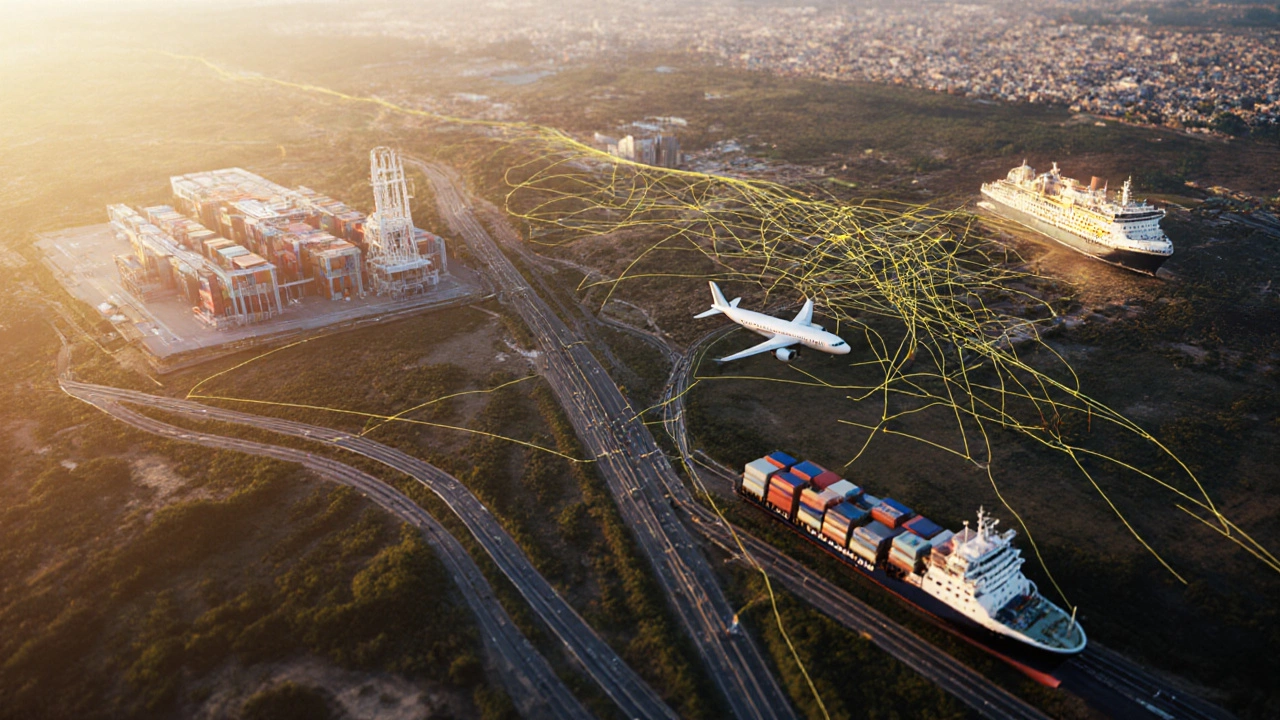Transport Logistics: Streamlining Goods Movement
When you hear Transport Logistics, the planning, execution, and optimization of moving goods from origin to destination. Also known as goods transport management, it plays a critical role in keeping shelves stocked and orders on time. Transport Logistics isn’t just about trucks on highways; it’s a network of decisions, tools, and people that turns a raw shipment into a delivered package.
Semantic triple: Transport Logistics encompasses last‑mile delivery.
Semantic triple: Transport Logistics requires freight forwarding.
Semantic triple: Supply chain management influences transport logistics. These connections explain why a single delay in a dockyard can ripple through an e‑commerce order, a retailer’s inventory, and a consumer’s expectations.
Key Components that Power Transport Logistics
At the heart of every transport operation sits the Supply Chain, the end‑to‑end flow of materials, information, and finances. When the supply chain runs smoothly, transport logistics can focus on the next step: moving items efficiently. Last‑Mile Delivery, the final stretch from a local hub to the customer’s doorstep, is where most consumer complaints surface, so logistics teams invest heavily in route optimization, real‑time tracking, and flexible carrier options.
Freight forwarding adds another layer; forwarders handle customs paperwork, cargo consolidation, and cross‑border compliance, turning complex international moves into a series of manageable tasks. Meanwhile, Warehouse Management (often powered by a Warehouse Management System) decides how fast a pallet can leave the dock, impacting both freight costs and delivery windows. The three pillars—supply chain, last‑mile delivery, and warehouse management—feed each other: a well‑organized warehouse reduces loading time, which speeds up last‑mile routes, which in turn eases pressure on the broader supply chain.
Digital tools like e‑logistics platforms and Transport Management Systems (TMS) tie everything together. An e‑logistics dashboard shows real‑time carrier performance, predicts bottlenecks, and suggests cheaper routes, while a TMS automates carrier selection, rate negotiation, and shipment tracking. These systems enable businesses to shift from reactive problem‑solving to proactive optimization. For instance, a retailer can use TMS data to batch shipments, lower freight rates, and guarantee next‑day delivery promises.
Looking ahead, the trends you’ll see in the articles below—size limits for major carriers, salary benchmarks for warehouse staff, and comparisons of overnight shipping options—are all pieces of the larger transport logistics puzzle. They illustrate how regulations, labor markets, and technology intersect to shape the cost, speed, and reliability of moving goods across India and beyond. Dive into the collection to see practical tips, real‑world numbers, and actionable advice that will help you master each part of the logistics chain.
Understanding the 3 Types of Logistics: A Clear Guide
Learn the three core logistics types-transportation, warehouse, and distribution-and how they work together. Get clear definitions, real‑world examples, software tips, and a handy comparison table.
Read More